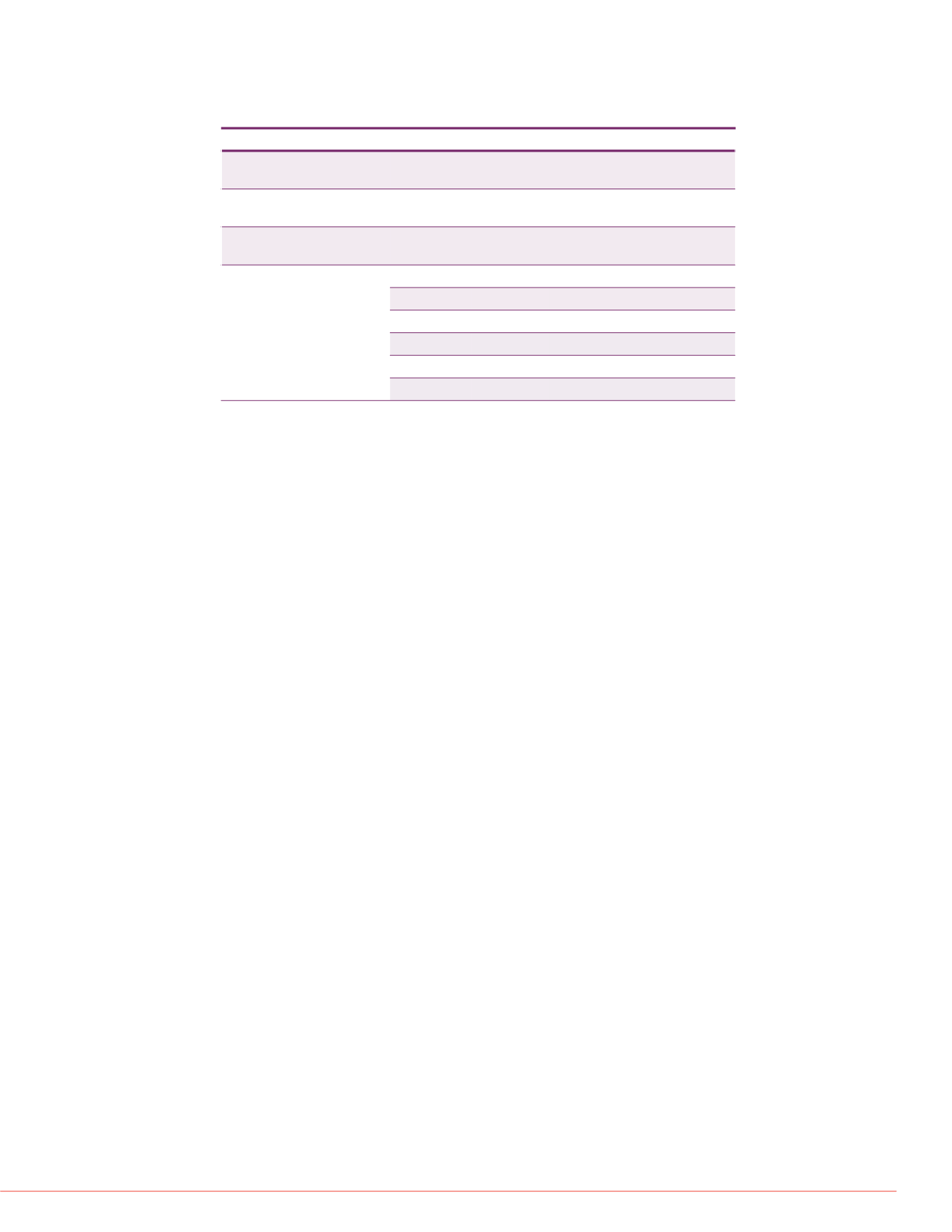

3
Thermo Scientific Poster Note
•
PN-64109-ASMS-EN-0614S
ne PPCP concentrations in
of selected PPCPs during
E) and analyzed by high
metry (HPLC-Orbitrap MS).
and personal care products
iclofenac (DCL),
dation products were
can readily determine
t (WWTPs) samples will be
meate samples obtained
ntitative results show the
r compounds with high
ne (CBZ), DEET, lidocaine,
ducts, we identified that in-
iclocarban (TCC) removal;
inated via a combination of
detected in this pilot
ridone.
their complex matrix which
hod. These samples were
nMBR) pilot plant located at
, Burlington, Ontario). A total
2 to March 2013. During this
at 20, 35 and 55 °C using
nter, to investigate the effect
were contained in 1L-amber
(4°C) until analysis.
chased from Sigma-Aldrich
standards were purchased
bridge isotope Laboratories
solutions were prepared by
e acetonitrile (CH
3
CN) and
er Scientific (Ottawa, ON,
ses and sample preparation
ugh a Thermo
Scientific™
ississauga, ON, Canada).
used to prepare samples for
screening. Waters OASIS®
PE) cartridge (6 cc, 500 mg)
ccredited by the Canadian
4.
ns)
Dionex™
UltiMate
™
3000
00 autosampler, and a TCC-
jecting 5
m
L extracts into a
ypersil
™
Gold, 2.1x100 mm
trap MS analysis.
One positive mode HPLC and two negative mode HPLC separations were used for the
analysis of PPCPs and their by-products.
TABLE 1. HPLC mobile phase and gradient used in the analysis
Mass Spectrometry
The HPLC
was interfaced to a Thermo Scientific™ Exactive Plus™
Orbitrap MS using
a heated electrospray ionization (HESI) interface. The Orbitrap MS system was tuned
and calibrated in positive and negative modes by infusion of standard mixtures of
MSCAL5 and MSCAL6. High purity nitrogen (>99%) was used in the ESI source (35
L/min). Spray voltages used were 2500 and 3200 V for positive and negative modes.
Mass spectrometric data was acquired at a resolving power of 140000 (defined as full-
width-at-half-maximum peakwidth at
m/z
200, R
FWHM
), resulting a scanning rate of >
1.5 scans/sec when using automatic gain control target of 1.0 x 10
6
and a C-trap inject
time of 100 msec.
Data Analysis
Thermo
Scientific™
TraceFinder
™
software were used to perform quantitative
analysis for 56 PPCPs. The same software was also used to perform non-targeted
screening along with a database of 312 compounds consisting of pharmaceutically
active compounds and their metabolites, steroids, hormones, surfactants and
perfluorohydrocarbons. TraceFinder software is used to search for adduct ions
(M+H)
+
, (M+NH
4
)
+
and (M+Na)
+
in the positive mode and (M-H)
−
molecular ion in the
negative mode for compounds listed in the database. The software then creates an
extracted ion chromatogram (XIC) using a mass extraction window (MEW) of 5 ppm.
Analytes were automatically identified using an XIC area threshold of 50,000
(approximately 25
–
50 pg/mL (ppt) depending on compound), a 5 ppm mass accuracy
for the mono-isotopic mass (M) and at least two isotopic peaks ((M+1) and (M+2)), and
a relative intensity of 90% ± 10% from the theoretical values. Typical screening time
was about 65 sec/sample using the 312 CEC database. Results obtained from
TraceFinder software were also exported to Thermo
Scientific™
SIEVE
™
software to
carry out ChemSpider
™
search. Principal component analysis was carried out using
the SIEVE software
too.
Results
Quantitative Analytical Results
Quantitative analysis determined 43 target PPCPs comprised of pharmaceuticals like
antibiotics, non-steroidal anti-inflammatory drug (NSAID); as well as personal care
products such as insect repellent and antimicrobial agents (Table 2). Antibiotics (e.g.
ciprofloxacin and sulfa drugs) found have the lowest median concentration compared
to other therapeutic classes. As depicted in Figure 1, the highest median concentration
is reported for the antidepressant drug; however since this group only has one
representative (i.e., CBZ), it is difficult to draw any conclusion.
FIGURE 1. Median concentr
Column oven temperature: 35
°
C; Flow rate: 450 mL/min
Mobile phase (Positive)
A: 5 mM HCOONH
4
/0.1% HCOOH in 10:90/CH
3
OH:H
2
O
B: 90:10/CH
3
OH:H
2
O
Mobile phase (Negative I) A: 10:90/CH
3
CN:H2O, pH 6.95
±
0.3
B: CH
3
CN
Mobile phase (Negative II) A: 5 mM CH
3
COONH
4
in 10:90/CH
3
CN:H2O, pH 6.95
±
0.3
B: CH
3
CN
HPLC Gradient
Time (min)
% A
% B
Curve
0.0
95
5
5
2.0
25
75
5
10.0
5
95
7
15.0
5
95
5
15.2
95
5
5
Compound
Name
Usage
Caffeine
Stimulant
Carbamazepine
Antiepileptic/antid
DEET
insect repellent
Lidocaine
anesthetic/anti-arr
Lincomycin
Antibiotic
Ketoprofen
analgesic/anti-infl
Bezafibrate
lipid regulator
Sulfamethazine
Antibiotic
Bisphenol A
commercial additi
Acetaminophen
analgesic/anti-infl
Diclofenac
analgesic/anti-infl
Norfloxacin
antibiotic
Triclocarban
antimicrobial/antif
Triclosan
antibacterial/antif
Estrone
estrogen
Oxolinic acid
antibiotic
Oxybenzone
sunscreen
Norethindrone
ovulation inhibitor
Ciprofloxacin
antibiotic
Estriol
estrogen
Ibuprofen
analgesic/anti-infl
TABLE 2. Quantitative resu
samples analyzed
0
1000
2000
3000
4000
5000
6000
7000
8000
9000
Concentration (ng/L)



















